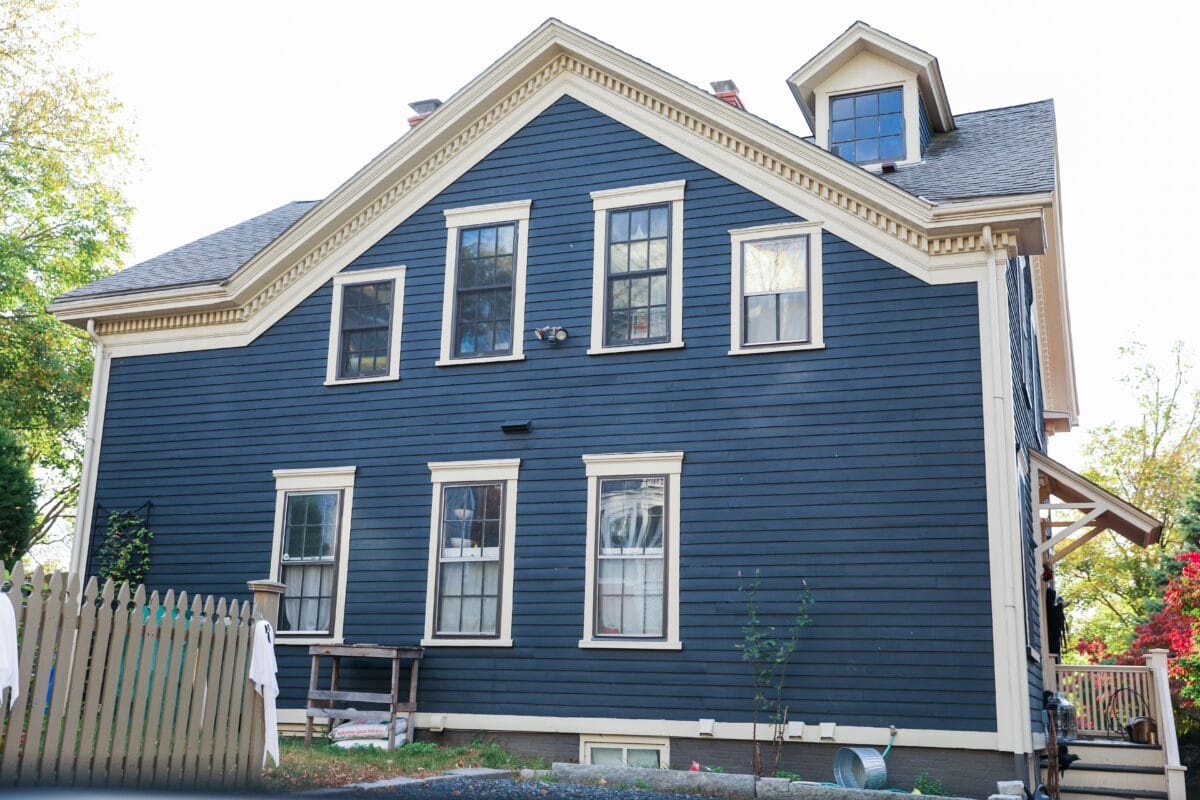As more homeowners prioritize sustainability in their renovation projects, eco-friendly siding options are gaining popularity. The right siding not only enhances curb appeal but can also reduce environmental impact, improve energy efficiency, and lower utility costs. From reclaimed wood to fiber cement, today’s eco-friendly siding options offer stylish, durable, and environmentally conscious solutions for any home style. Here’s what you need to know about the top sustainable siding choices and how they can make a positive difference for your home and the planet.
What Makes Siding Eco-Friendly?
Eco-friendly siding is typically defined by factors such as:
- Sustainable Sourcing: Materials sourced responsibly, such as reclaimed or renewable resources, reduce the impact on natural habitats and limit deforestation.
- Energy Efficiency: Some siding materials improve insulation, lowering the energy needed for heating and cooling your home.
- Durability and Longevity: Siding that lasts longer requires fewer replacements, ultimately reducing waste and resource use over time.
- Recyclability: Materials that can be reused or recycled at the end of their lifespan are preferable for reducing landfill waste.
Top Eco-Friendly Siding Options
Here are some of the best eco-friendly siding materials to consider:
- Fiber Cement Siding
Fiber cement siding is made from a mix of sand, cement, and cellulose fibers, resulting in a strong, durable product that resists rot, insects, and harsh weather conditions. It also has excellent fire resistance, making it ideal for homes in wildfire-prone areas.
Eco-Friendly Advantage: Fiber cement siding typically lasts 50 years or more, reducing the need for frequent replacements. It’s often made with recycled materials and can be painted in a variety of colors to suit any home style. Additionally, fiber cement siding provides insulation benefits, helping to lower energy usage for heating and cooling.
- Reclaimed Wood Siding
For those who love the look and feel of natural wood, reclaimed wood siding is an excellent eco-friendly choice. This option involves repurposing old wood from barns, factories, and other sources, giving it a new life instead of allowing it to go to waste.
Eco-Friendly Advantage: Reclaimed wood siding minimizes deforestation by repurposing existing wood. It has a unique, weathered look that gives your home character and charm. With proper maintenance, reclaimed wood siding can last for decades, adding both beauty and sustainability to your home.
- Engineered Wood Siding
Engineered wood siding is a modern take on traditional wood siding. Made from wood fibers and resin, this material is designed to be more durable and resistant to moisture, pests, and other damage than regular wood.
Eco-Friendly Advantage: Engineered wood uses less wood than traditional lumber siding, which helps conserve resources. It’s manufactured with fewer chemicals than many synthetic options, making it a healthier choice for homeowners and the environment. With a lifespan of 20-30 years, engineered wood is a cost-effective and sustainable option.
- Metal Siding
Metal siding, especially aluminum and steel, is highly durable and can be recycled at the end of its life, making it an eco-friendly option. This type of siding is particularly popular for modern and industrial-style homes.
Eco-Friendly Advantage: Metal siding is often made from recycled materials and can be fully recycled again when it’s time for replacement. Its durability means it can withstand severe weather conditions, minimizing the need for repairs. Metal also reflects heat, which helps keep your home cool in hot weather, contributing to energy savings.
- Brick and Stone Veneer
While brick and stone are natural materials, they require significant energy to produce. However, they’re also extremely durable, lasting up to 100 years or more, which reduces the need for frequent replacements. Using a thinner veneer version can help reduce the environmental impact.
Eco-Friendly Advantage: Brick and stone veneer siding offers a durable and low-maintenance option that minimizes resource consumption over time. These materials provide natural insulation, helping to regulate your home’s temperature and reducing energy use for heating and cooling.
- Insulated Vinyl Siding
Though vinyl is a synthetic material, the insulated version can improve energy efficiency by adding an extra layer of insulation to your home. Insulated vinyl siding is lightweight, which reduces transportation emissions, and is often made with recycled content.
Eco-Friendly Advantage: Insulated vinyl siding helps reduce the energy your home requires for heating and cooling, leading to lower utility bills. While not fully recyclable, some manufacturers have recycling programs for old vinyl siding, further reducing waste.
Choosing the Right Eco-Friendly Siding
When selecting eco-friendly siding, consider:
- Your Climate: Certain materials work better in specific climates. For example, fiber cement performs well in humid regions, while metal siding is ideal for areas with extreme weather.
- Maintenance Needs: Some eco-friendly materials, like wood, require regular maintenance to ensure longevity. Be prepared to invest in upkeep if you choose these options.
- Aesthetics: Eco-friendly siding options come in various textures, colors, and styles. Choose one that complements your home’s design for the best curb appeal.
The Benefits of Eco-Friendly Siding
By investing in eco-friendly siding, you can enjoy several benefits, including:
- Reduced Environmental Impact: Using sustainable materials and energy-efficient siding reduces your carbon footprint.
- Long-Term Savings: Many eco-friendly options offer durability and insulation benefits, which can save you money on replacements and energy costs.
- Increased Property Value: Homebuyers often look for energy-efficient and sustainable features. Eco-friendly siding can add appeal and value to your home.
Final Thoughts
Eco-friendly siding is a smart investment for homeowners looking to enhance their home’s appearance while reducing its environmental impact. From reclaimed wood to energy-efficient fiber cement, there’s a sustainable siding option for every aesthetic and budget. Whether you’re building new or updating an existing home, consider the long-term benefits of eco-friendly siding for a greener, more efficient future.


